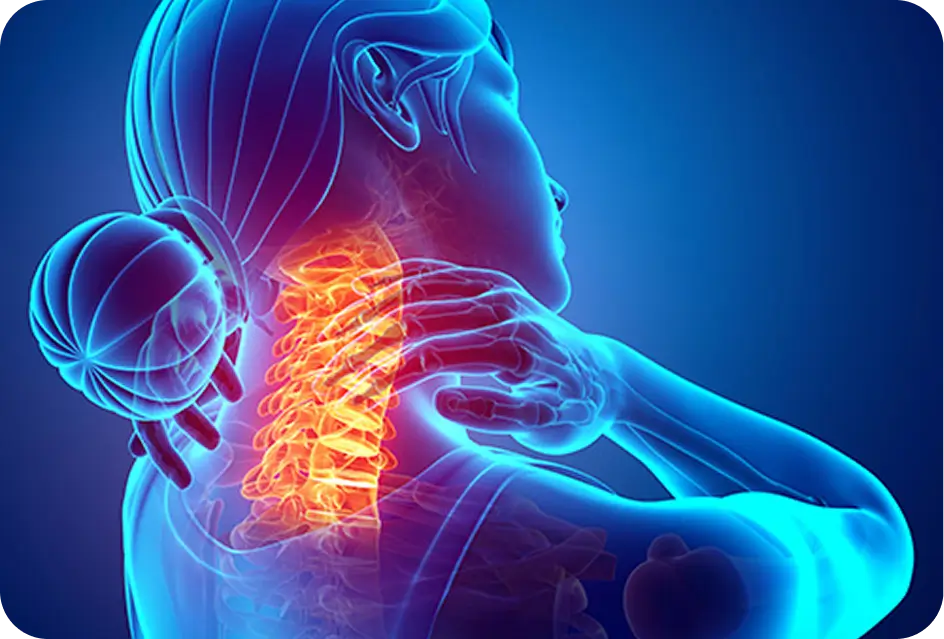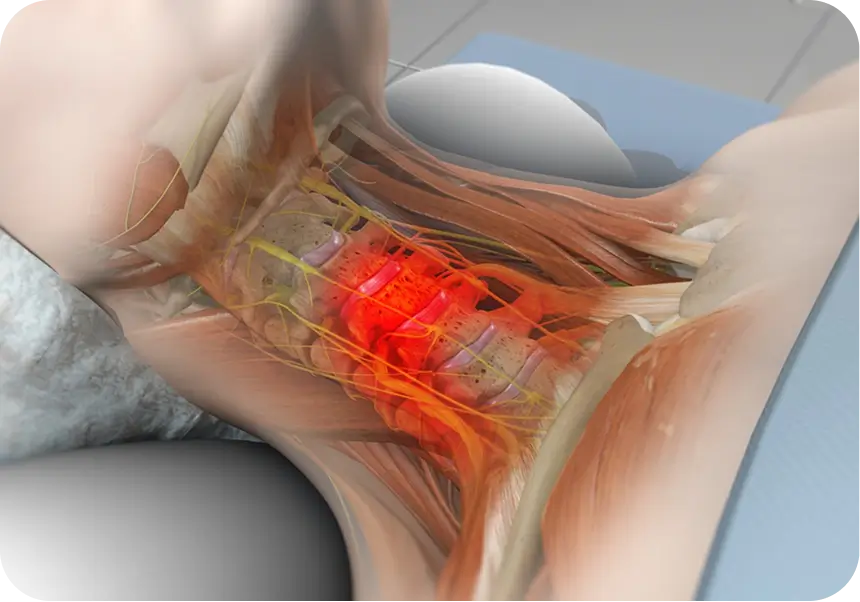ACDF treats pinched nerves or cord compression in the neck by removing the problem disc, decompressing nerves, and fusing to stop painful motion.
Alternative: If your facets are healthy and it’s a single-level issue, Artificial Disc Replacement may be a motion-preserving option.


Post-op focus: safe mobilization, swallowing checks, and tailored physical therapy.
See how ACDF compares to lumbar fusion in Spinal Fusion Overview.
Request Your Same-Day Cervical Fusion Evaluation
Don’t wait in pain — our expert spine specialists are available for same-day evaluations.
Cervical Fusion is ideal for patients with nerve compression, herniated discs, or spinal instability causing neck or arm pain. It’s also used for cervical myelopathy and postural deformity. When only one level is affected and facets remain healthy, Artificial Disc Replacement may be a motion-preserving alternative to Cervical Fusion.
During ACDF, the surgeon makes a small incision at the front of the neck to remove the damaged disc, decompress the nerves, and fuse the bones using a cage or graft. This stops painful motion and restores stability. To see how this differs from lumbar approaches, visit our Spinal Fusion Overview.
Recovery from Cervical Fusion typically allows desk work within 1–2 weeks and driving once head-turning feels safe. Full fusion occurs over several months. Physical Therapy & Rehab helps strengthen and restore motion, while an Electromyography (EMG) Study can track nerve recovery and healing progress.
For one-level disease with healthy facet joints, Artificial Disc Replacement preserves neck motion. Multilevel instability or deformity favors Cervical Fusion (ACDF) for lasting correction and stability. Your surgeon will explain implant choices, risks, and recovery expectations to ensure your plan fits your anatomy and activity goals.
Some patients experience mild hoarseness or temporary swallowing discomfort after Cervical Fusion due to retraction near the airway. These symptoms typically resolve quickly. If they persist, an Electromyography (EMG) Study may help assess nerve recovery. You can also compare outcomes with Artificial Disc Replacement for motion preservation.
Collar use after Cervical Fusion depends on bone quality and surgical levels. One-level cases may use a soft collar briefly, while multilevel fusions may need rigid support. Driving resumes when motion and reaction time are safe. Physical Therapy & Rehab and the Spinal Fusion Overview outline typical recovery milestones.
Contact us and set up your doctor visit today to start your journey to pain-free living